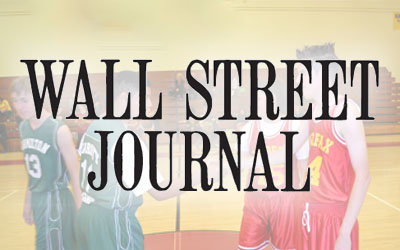Life Lessons on the Basketball Court – Wall Street Journal

LOS ANGELES — Sarah Esther Wolin caught a pass from Baylee Thomas, dribbled down the court and buried a three-pointer, bringing Fairfax High School within two points of rival Venice High. The crowd in the bleachers roared.
Their teamwork could set a national example. Sarah Esther is 17 years old and has Down syndrome; Baylee, 16, is her “peer coach.” In an innovative program, the pair play basketball on a coed team that matches up special-needs teenagers with nondisabled students. “I really appreciate what I have learned from helping her,” said Baylee, a sophomore.
The Los Angeles program, which began in 2012, is in line with Education Secretary Arne Duncan’s instruction to school districts early this year to ensure students with disabilities have “equal opportunity to benefit from life lessons they can learn on the playing field or on the court.”
Disabled students should be considered for a traditional team if “reasonable modifications” can be made to accommodate them, according to the Education Department’s guidance, which was issued to clarify schools’ obligations under federal law. If adjustments would alter the sport, schools can establish other programs, such as blended teams.
That is what Los Angeles nonprofit Team Prime Time is doing — with a twist. Its “varsity” basketball league pairs special-needs students — who have conditions such as Down syndrome, cerebral palsy or autism — with nondisabled peers, many of whom are low-income. The league, in its second season, includes Fairfax, Venice and two other schools.
“We are taking two marginalized populations and making them a part of the school fabric,” said Peter Straus, founder of Team Prime Time.
Bonding continues well after the final buzzer. Sarah Esther, an Orthodox Jew, and Baylee, an African-American, give each other high-fives in the halls; they often sit together in the cafeteria. Both have gained recognition from the broader school community. “The school is catching on to this, and it’s a game-changer for everyone,” said Judi Edwards, Fairfax’s athletic director.
The program is a partnership with Los Angeles Unified School District. The nation’s second-largest district after New York City’s, it has more than 650,000 students, about 80% of them eligible for reduced-price or free lunches.
Research has shown that economically disadvantaged students who participate in sports or other extracurriculars are more likely to complete high school and less likely to have behavioral problems.
For special-needs students, schools are increasingly seeking integration with regular students to boost self-esteem and improve learning.
Like other districts, Los Angeles Unified has many demands for limited funds. Team Prime Time taps local businesses to pay for uniforms, referees and staff for the blended teams, which cost about $10,000 per school. The goal is to expand the league to 16 schools in Los Angeles by 2015.
Mr. Straus’s dream is to have his model replicated nationally. Earlier this year, he traveled to Washington to introduce the program to several lawmakers. Rep. Henry Waxman (D., Calif.) said Team Prime Team “breaks down the barriers that too often separate special-needs youth from other students.” The program, he said, “offers a terrific model that school districts should consider.”
School districts in several states hold competitions for disabled athletes. In Maryland’s public schools, high-school students with disabilities join in sports such as bocce ball and bowling with nondisabled peers.
In the Los Angeles program, because students are paired, games are six-on-six instead of five-on-five, but only special-needs students shoot. Most of the special-needs players are new to basketball and had to learn not to grab opponents.
At the game in Fairfax’s main gym, Devante Scovell, a 6-foot-1-inch center for Venice who has autism, helped his team take control early on. Another powerhouse for the Mighty Gondoliers was Raul Velasco, a 5-foot-tall player with Down syndrome. Fairfax’s autistic 6-foot-3-inch Clinton “C Money” Moore was guarding Raul as the game heated up. Joseph Ragsdale, a Fairfax player with Asperger’s syndrome who also had reconstructive surgery on both legs, scored a basket.
No scuffles broke out. There were few fouls, many layups and plenty of timeouts. Each team had its ball hog. At one point, a nonverbal autistic player, excited after making a basket, strayed away from the action. His peer coach escorted him to the bench.
The “Gondos” led the Lions by two points as time wound down. But Fairfax’s No. 6, Tiger Reihel, tied the game and then scored on a buzzer beater, clinching a 32-30 Fairfax victory. “It’s a gift to play on the school team,” said C Money.
Rikky Wolin, there to videotape her kid sister, Sarah Esther, said: “We’d never seen her beaming like this before. She tells everyone she meets about her basketball league.”
Asked what she thought, the player gave a thumbs up and declared: “I am a winner.”
License this article from Dow Jones Reprint Service [http://www.djreprints.com/link/DJRFactiva.html?FACTIVA=wjco20130530000129] Dow Jones & Company, Inc.
By Miriam Jordan
Sponsor: payday loan no drivers license
